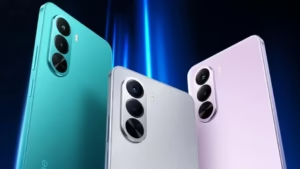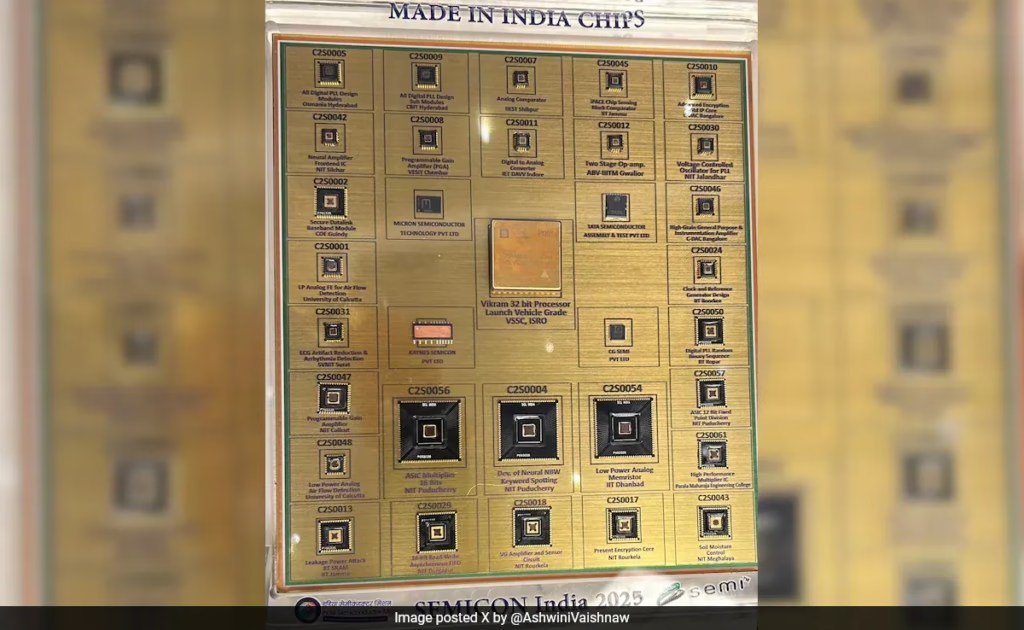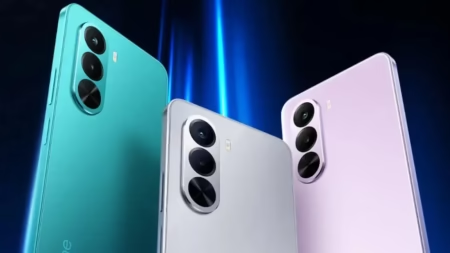On Tuesday, Union Information and Broadcasting Minister Ashwini Vaishnaw unveiled India’s first indigenously developed Vikram-32-bit chip, presenting it to Prime Minister Narendra Modi during the inauguration of the Semicon India 2025 conference.
Calling semiconductors the “digital diamond” of today’s world, PM Modi remarked, “Oil was black gold, but semiconductor chips are a digital diamond.” His words set the tone for what many see as a landmark moment in India’s technology journey.
What Is The Vikram-32 Bit Chip?
The Vikram-32, officially known as VIKRAM3201, is the first fully indigenous 32-bit microprocessor designed and qualified for space missions.
Add image caption here
It was created by the Vikram Sarabhai Space Centre (VSSC) and manufactured at the Semiconductor Laboratory (SCL) in Chandigarh, a unit of ISRO. Built to survive the intense vibrations of rocket launches and the harsh environment of outer space, this chip represents years of dedicated effort by Indian scientists.
How It Came About
The Vikram-32 chip was designed at VSSC and produced at the 180nm CMOS facility in Mohali, Punjab. It follows the earlier VIKRAM1601, a 16-bit microprocessor that has powered ISRO’s rockets since 2009.
In March, ISRO formally inducted the new chip into its programme, alongside another microprocessor called KALPANA-3201.
Key Features
This next-generation processor is based on a 32-bit architecture, giving it greater efficiency in handling large amounts of data. Among its standout features are:
-
Support for floating-point computation, vital for complex aerospace and satellite operations.
-
A custom Instruction Set Architecture (ISA) designed specifically for space needs.
-
Programming support for the Ada language, a standard in aerospace engineering.
-
Complete in-house development of software tools such as the compiler, assembler, linker, and simulator.
-
Future plans to add C programming language support.
Beyond Space Applications
While the Vikram-32 is primarily meant for satellites and rockets, its rugged build makes it suitable for other demanding sectors. Potential use cases include:
-
Defence and security systems
-
Aerospace technologies
-
Advanced automotive solutions
-
High-reliability energy systems
The processor is also a shining example of progress under the India Semiconductor Mission (2021) and the Design-Linked Incentive (DLI) scheme. It not only reduces dependence on imported chips but also strengthens the vision of Atmanirbhar Bharat (self-reliant India).
The Bigger Picture: Semicon India 2025
The Semicon India 2025 conference is a three-day platform dedicated to shaping a strong semiconductor ecosystem in India. Discussions range from chip fabrication and artificial intelligence to advanced packaging, R&D, investment opportunities, and state-level initiatives.
During the event, the government revealed that projects worth Rs 1.60 lakh crore have been cleared across six states, covering 10 major semiconductor ventures. Work on five new semiconductor units is already underway. The government is also backing more than 23 design startups through the DLI scheme, ensuring that innovation continues at every level.








